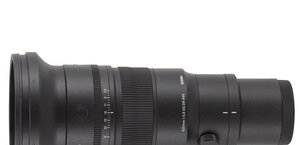Panasonic Leica DG Vario-Elmarit 50-200 mm f/2.8-4 ASPH.
8. Vignetting
| E-M5 II, JPEG, 50 mm, f/2.8 | E-M5 II, JPEG, 50 mm, f/4.0 |

|

|
| E-M5 II, JPEG, 100 mm, f/3.6 | E-M5 II, JPEG, 100 mm, f/4.0 |

|

|
| E-M5 II, JPEG, 150 mm, f/3.9 | E-M5 II, JPEG, 150 mm, f/5.6 |

|

|
| E-M5 II, JPEG, 200 mm, f/4.0 | E-M5 II, JPEG, 200 mm, f/5.6 |

|

|
At the shortest focal length and the maximum relative aperture the vignetting amounts to 39% (−1.43 EV). On stopping down the aperture to f/4.0 it decreases to 19% (−0.61 EV), and by f/5.6 it becomes imperceptible (6% and −0.17 EV).
Please Support UsIf you enjoy our reviews and articles, and you want us to continue our work please, support our website by donating through PayPal. The funds are going to be used for paying our editorial team, renting servers, and equipping our testing studio; only that way we will be able to continue providing you interesting content for free. |
- - - - - - - - - - - - - - - - - - - - - - - - - - - - - - - - - - - - - - - - - - - - - - - -
At 100 mm the performance is better. By f/3.6 the vignetting level reaches 25% (−0.83 EV), then it decreases to 16% (−0.50 EV) by f/4.0 and by f/5.6 it gets to a quite imperceptible level of 4% (−0.12 EV).,
In the case of the 150 mm focal length and f/3.9 aperture the brightness loss in frame corners amounts to 32% (-1.12 EV). By f/5.6 and f/8.0 we got the following results: 12% (−0.36 EV) and 4% (−0.12 EV).
Similar results you can observe at the maximum focal length. By f/4.0 the vignetting reaches 34% (−1.18 EV) and by f/5.6 it decreases to 14% (−0.44 EV). After employing f/8.0 that aberration disappears practically completely (4%).
The results reached in RAW files are very similar – typically they don’t differ from JPEGs by more than 1-2% so can be considered the same within the margin of error.
In this category the results of the Panaleica should be described as sensible. Slower full frame 100-400 mm lenses can experience brightness loss of 40% or even slightly higher at their maximum relative apertures so the tested lens compares rather favourably with them.
| Olympus O-MD E-M5 Mark II, JPEG, 50 mm, f/2.8 |
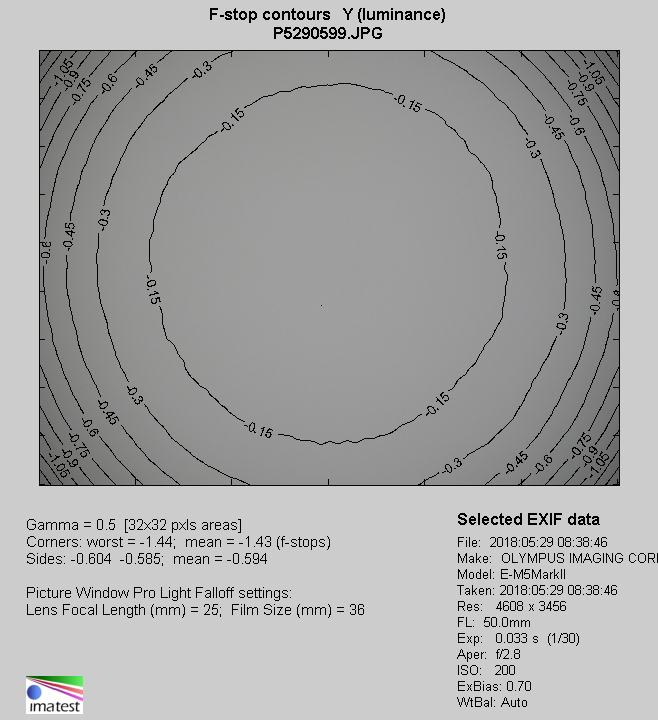 |
| Olympus O-MD E-M5 Mark II, JPEG, 100 mm, f/3.6 |
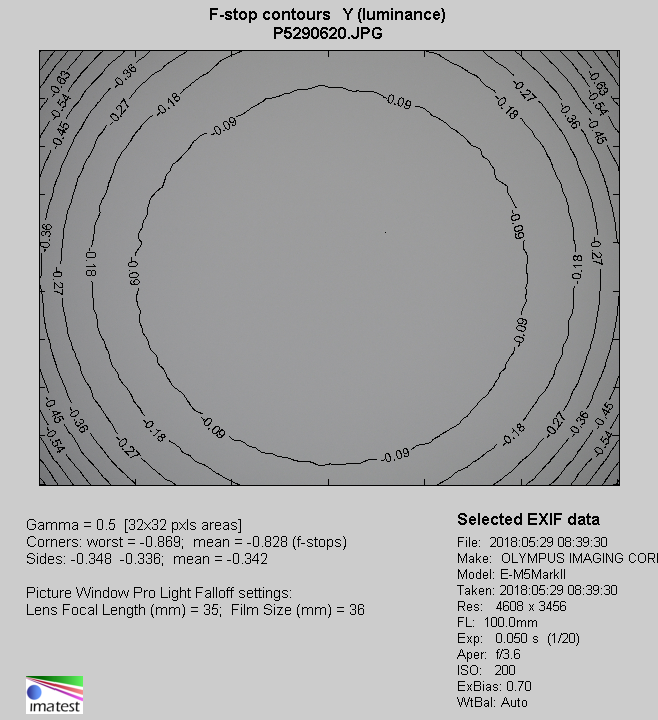 |
| Olympus O-MD E-M5 Mark II, JPEG, 150 mm, f/3.9 |
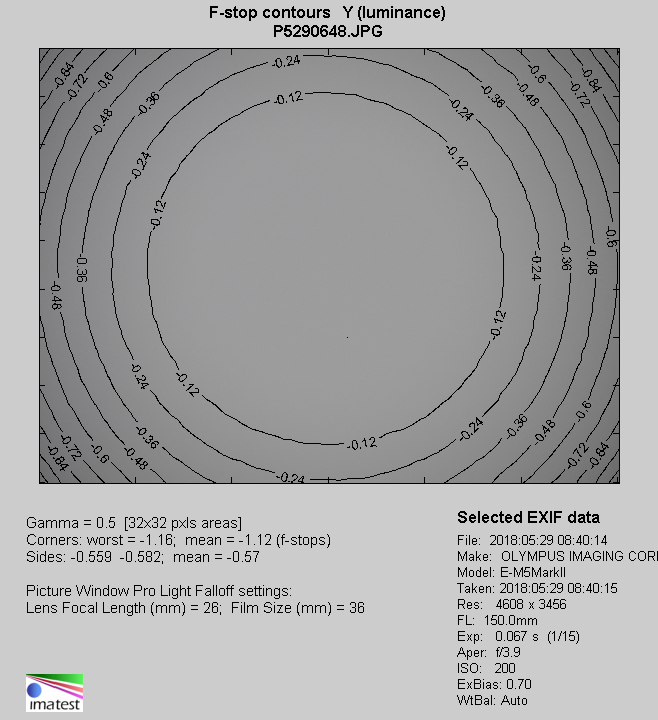 |
| Olympus O-MD E-M5 Mark II, JPEG, 200 mm, f/4.0 |
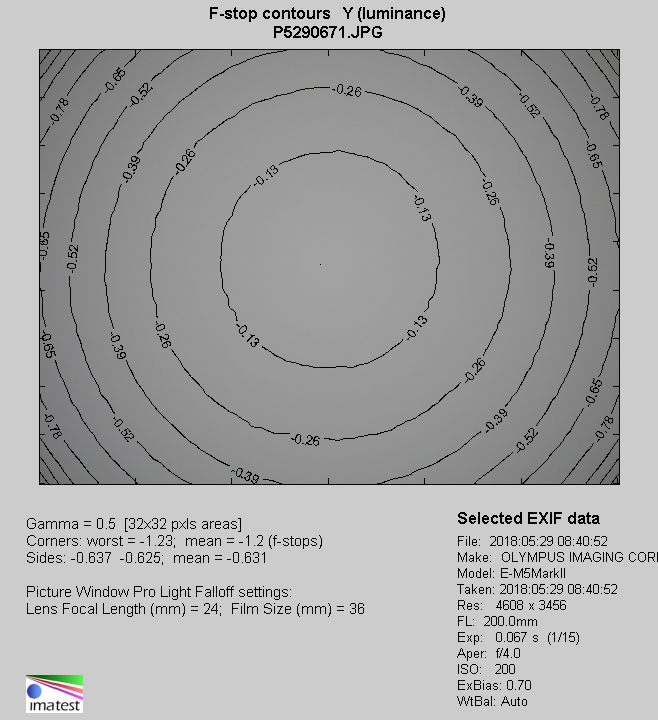 |




